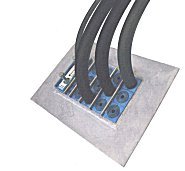Wednesday, December 31, 2008
2009 Masa untuk relaxxx
Adakah cukup ilmu sebagai designer atau drafman? Atau menjadi designer atau drafman sekadar memenuhi kehendak industri. Ada ot belasah cukup-cukup, dapat offer tinggi lompat, kerja macam nak rak janji dapat lebih.
Adakah sama taraf kita berbanding dengan pare-pare dari segi technical knowledge.
Adakah knowledge yang ada setaraf dengan designer muktabar?Sekiranya kita merasakan kita designer yang terbaik.
Adakah pemikiran kita pada tahap pemikiran designer,menilai sesuatu mengikut penilaian designer,andainya kita designer.
Jika kita drafman, adakah kita telah megutip knowledge yang ada untuk bekalan jika menjadi designer esok hari? Atau hanya berserah pada takdir, lama-lama akan promote jadi designer juga.
Sepatutnya kita mendapat menafaat dari kesibukkan yang lalu untuk meningkatkan pengetahuan dan pengalaman. Tapi apa yang berlaku ialah kebanyakannya menggunakan suasana ini untuk meningkatkan pendapatan. Menggunakan peluang akibat dari kekurangan manpower dengan melompat dari satu syarikat ke syarikat lain yang dapat menawarkan gaji yang tinggi.
Pada tahun 2009 jika keadaan ekonomi berlarutan, syarikat akan mengekalkan pekerja yang mempunyai kemahiran dan akal didalam organisasinya. Minta maaf kata pekerja yang gaji tinggi akan dinilai semula mengikut keperluan. Syarikat akan optimise manpower sebaik mungkin.
Walau apapun banyak-banyak lah berdoa dan beribadat sesungguhnya rezeki itu Allah yang bagi bukan syarikat tapi ilmu kita kena cari..
Sunday, December 21, 2008
GIVE CONSTRUCTIVE FEEDBACK
GIVING feedback is one of the most important interpersonal skills for any manager.
The purpose of constructive feedback is to provide information that will contribute to improvements and create better results.
For feedback to be useful, it has to be actionable, otherwise it's likely that the situation or behaviour will recur.
Whenever you are giving feedback, keep in mind that you'll probably have an ongoing relationship with this person, so use your feedback to reinforce good relations.
Let's say that you're giving constructive feedback to a member of your staff. Here are five steps to help you give good feedback:
1-TIME IT RIGHT
Make sure the time is right. The sooner the better, but if you're upset about the situation - or your employee is - take a "timeout”. This is preferable than giving or receiving feedback when one of you is already in a bad mood.
2-CHOOSE YOUR WORDS
The way you say something can have a great impact on the listener. Depending on your choice of words, you can establish an amicable feedback environment or a hostile one.
Saying, "You need to do..." or "You're not doing this properly," can put the receiver on the defensive from the get-go. Using the pronoun "you" makes the comments personal and can be interpreted as condescending or highly critical. Instead, say "I noticed that..." or "I understand that..." Beginning feedback phrases this way discusses the action or behaviour that needs to be changed, not the person.
3-BE POSITIVE
Positive feedback acknowledges good contributions and work well done. Give specific examples of what the person did well.
Doing so is more meaningful than a general "Good job!" comment that can be said to anyone, any time, and doesn't even have to be sincere.
Let the receiver know the positive impact his contributions had on the department or organisation so he understand the results - this also lets him know that you see it and appreciate it. In addition, reinforcing the positive encourages more of the same.
4-BE DESCRIPTIVE
When giving constructive feedback, discuss what happened, not how you feel about what happened. Focus on the situation, describe it, and stay objective.
Give a reason why it's an issue and state the impact it had on the rest of the staff, the organisation or the customer.
When you stick with the facts, you can discuss them more easily. Being specific and clear assists the listener in understanding the issue and what requires changes.
5-COLLABORATE
It's not up to you to come up with all the solutions by yourself, although you can offer suggestions that you think would be helpful.
Make a point of involving the recipient in this crucial part of the feedback process.
This way, the recipient has some ownership and involvement in decision-making, which will result in a greater commitment to see that it's implemented.
Working together finds better ways of improving the situation and will likely create a solution that is acceptable to both of you.
Offering constructive feedback can seem like a daunting task. If it is approached with the intention of making improvements and creating better situations, rather than criticising and judging, it is positive input that gets beneficial results.
- The Star 20-12-2008
-Source: ST/ANN
Article by Laurie Wilhielm, the author of Express Yourself to Success.













